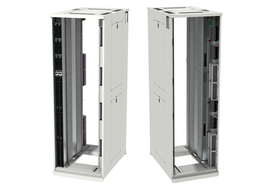Microsoft is creating a tool to automatically schedule workloads depending on their urgency and environmental impact.
The Motley Fool reports the company recently filed a patent application for a "sustainability-aware" system for device behavior management that determines the actions taken by a computing device by considering their impact on the energy grid.
Microsoft's system first obtains "sustainability information" on a grid’s carbon intensity at given times, along with environmental factors such as weather, temperature, and energy demand on the grid.
The system then determines a sustainability forecast, which is used to manage device functionality, and hold off performing certain actions until they'd have a "comparatively lower environmental impact."
Microsoft said this avoids energy consumption during peak times which would have a higher environmental impact. The company also claimed this could lengthen hardware lifespans.
Dr. Dan Stein, founder and director of climate-giving consultancy Giving Green, told the MF that Microsoft could use the system to hold off certain data center operations until times of day when clean energy is readily available.
"The idea is, if you could anticipate when there's going to be clean energy, and there are certain highly computational intensive tasks that you have a choice of when you're going to them, you would just do them at the right time," said Stein.
Google has begun shifting its own internal compute tasks across different data center locations depending on grid carbon intensity in what it calls "carbon-aware computing."
The search and cloud company has said that while latency-sensitive workloads, those covered by data sovereignty laws, or cloud customer tasks will still be based out of their original data center, media processing efforts – including encoding, analysis, and processing multimedia – for media such as videos uploaded to YouTube, Photos, and Drive are those that are movable.
Microsoft plans carbon capture directly at data centers
Last month The Daily Upside’s PatentDrop noted that Microsoft had filed a patent application for a “carbon capture system.”
The publication noted Microsoft’s system works specifically in conjunction with data centers, as they generate a great deal of exhaust heat from their cooling systems.
“Using waste heat to release captured carbon dioxide may help to reduce the carbon footprint [of] commercial operations,” Microsoft said. “For example, using the waste heat of a computing device or a plurality of computing devices may help to reduce the carbon footprint of a data center.”
According to PatentDrop, Microsoft’s system would consist of two “carbon capture plates,” the first of which collects carbon dioxide from “a flow of ambient air,” or outside, environmental air. The second plate releases that carbon dioxide once heat is applied from the exhaust vent of a data center’s cooling system. That carbon dioxide is emptied into a dedicated “release chamber" with a dedicated carbon storage tank, where it is compressed.
The system would be operated by a machine learning model, which monitors things like air temperature, computing load of the data center, and amount of carbon captured, and “adjusts one or more operating parameter(s) to improve performance of the carbon capture system.”
Microsoft has previously invested in several carbon capture ventures, including CarbonCapture, ClimeWorks, Running Tide, and Heirloom.
The company has pledged to become carbon negative by 2030, and by 2050 says it will have removed all the carbon it has emitted since its founding in 1975.
DCD has reached out to Microsoft for more information on both patents.







